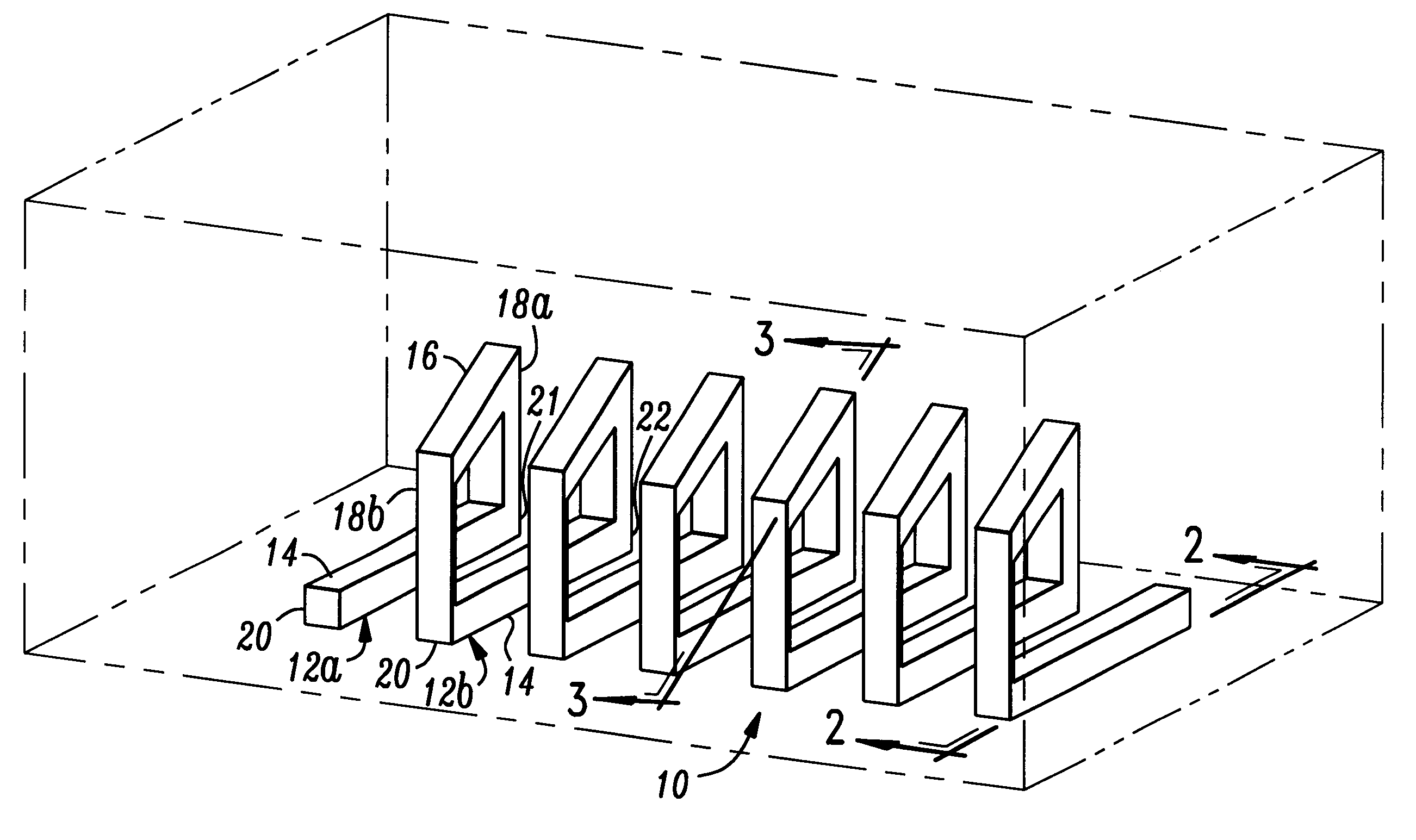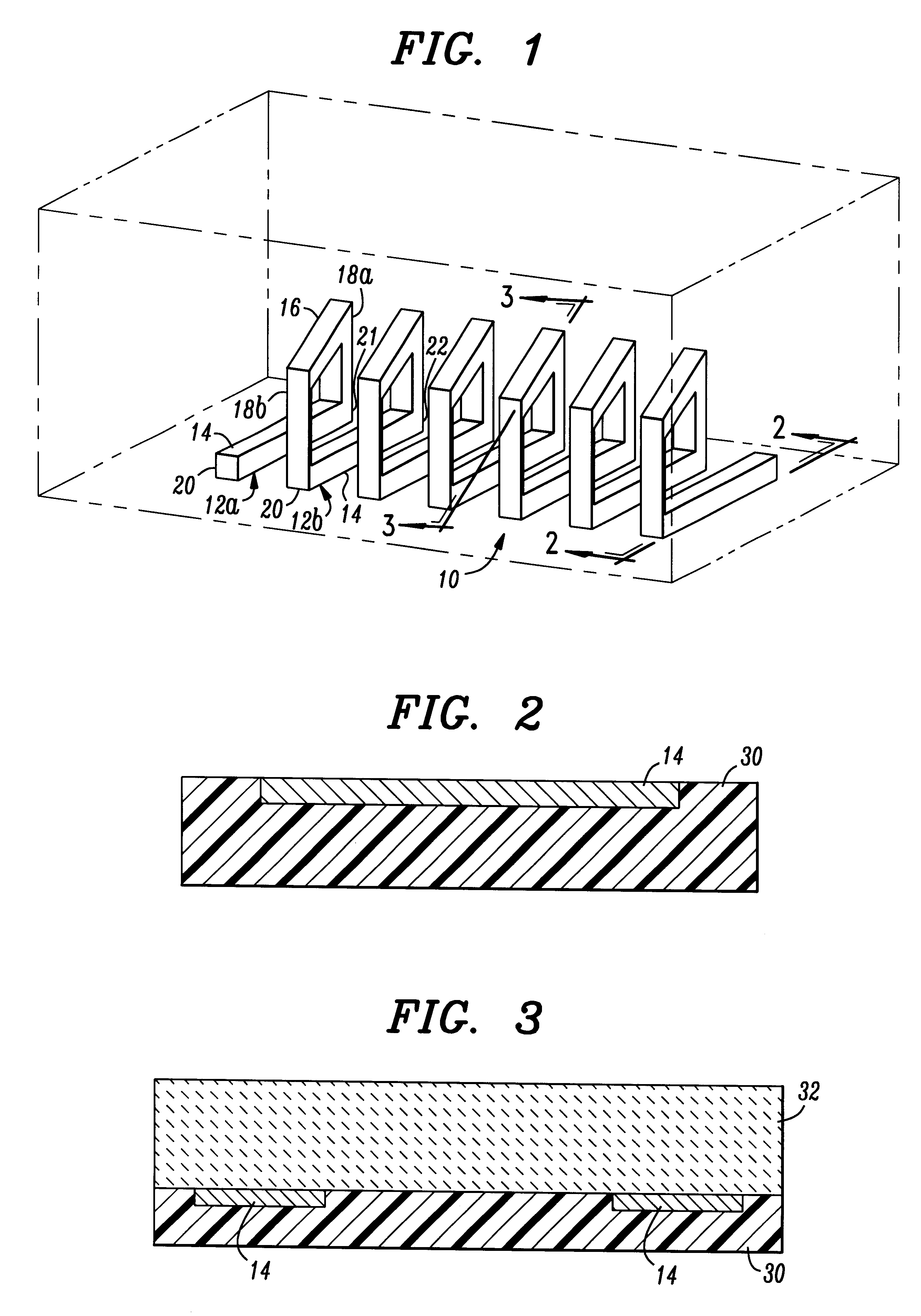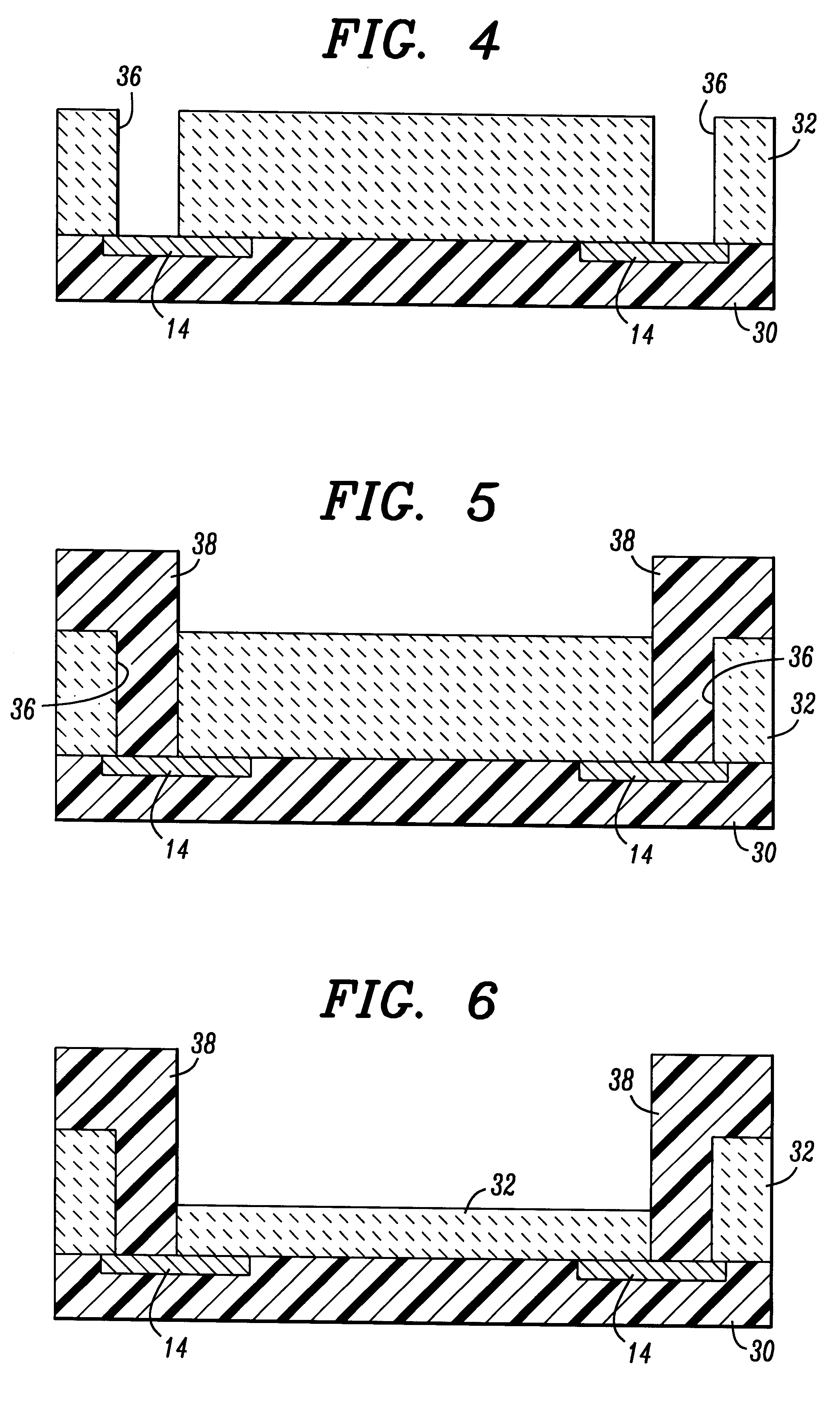Lateral high-Q inductor for semiconductor devices
a semiconductor device and high-q technology, applied in the direction of transformers/inductance coils/windings/connections, basic electric elements, etc., can solve the problems of incompatible technology with the upper level copper metalization, inability to use the area subsequently for other circuitry, and inability to meet the requirements of semiconductor devices. achieve the effect of reducing the area requirements of the semiconductor devi
- Summary
- Abstract
- Description
- Claims
- Application Information
AI Technical Summary
Benefits of technology
Problems solved by technology
Method used
Image
Examples
Embodiment Construction
A lateral inductor for a semiconductor device according to the invention is illustrated in FIG. 1. The inductor 10 comprises a plurality of loops 12 connected in series along a lateral axis of the semiconductor device. The number of loops 12 for each inductor 10 is at least one and preferably two at a minimum and has no maximum number. Each loop 12 includes a bottom leg 14, a top leg 16, and a pair of side legs 18a, 18b. Between adjacent loops 12a, 12b, the second side leg 18b of the first loop 12a connects to the bottom leg 14 of the second loop. It being understood, however, the end point of one loop and the starting point of an adjacent loop need not occur between the second leg of the one loop and the bottom leg of the adjacent loop. Instead, the end point of one loop and the starting point of an adjacent loop can be at any point along the loop.
Although the bottom legs 14 of the inductor 10 can be oriented at any angle relative to one another, the bottom legs 14 of the inductor ...
PUM
| Property | Measurement | Unit |
|---|---|---|
| conductive | aaaaa | aaaaa |
| area | aaaaa | aaaaa |
| areas | aaaaa | aaaaa |
Abstract
Description
Claims
Application Information
 Login to View More
Login to View More - R&D
- Intellectual Property
- Life Sciences
- Materials
- Tech Scout
- Unparalleled Data Quality
- Higher Quality Content
- 60% Fewer Hallucinations
Browse by: Latest US Patents, China's latest patents, Technical Efficacy Thesaurus, Application Domain, Technology Topic, Popular Technical Reports.
© 2025 PatSnap. All rights reserved.Legal|Privacy policy|Modern Slavery Act Transparency Statement|Sitemap|About US| Contact US: help@patsnap.com



